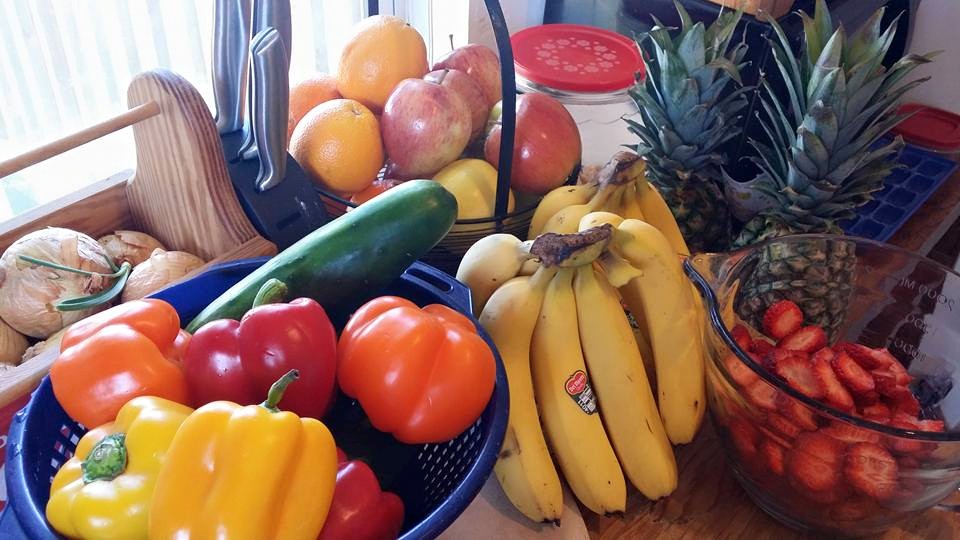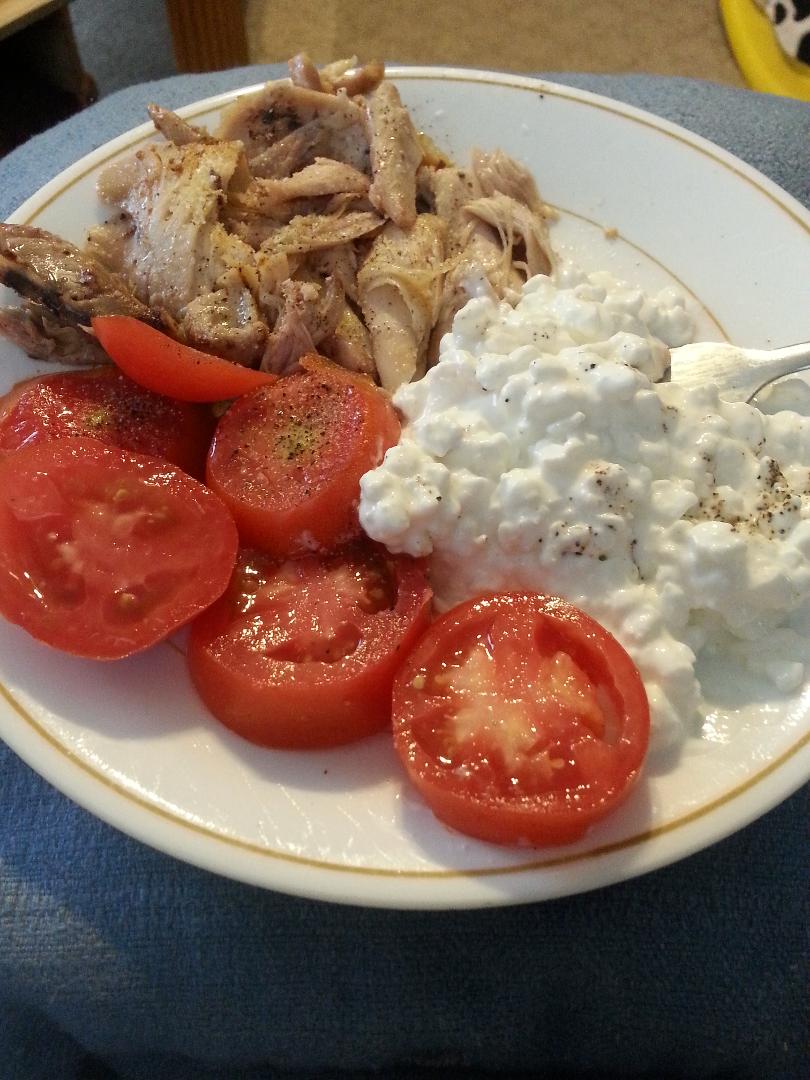As an Amazon Associate I earn from qualifying purchases.

Potassium Helps Keep
Blood Pressure in Check
Potassium helps keep Blood pressure in check and that information was a game changer for me, wow.
When I first learned about potassium and its importance in regulating blood pressure, I was amazed at how not having enough of this simple mineral, could make such a profound difference in our health.
I wasn't and still am not on blood pressure scripts, however I had more episodes of high blood pressure than I wanted to experience.
The habit of eating high potassium foods really makes a difference in keeping my blood pressure down.
To go straight to the Potassium food chart, with mg values per serving, Click here.
There are several factors
that can raise or lower blood pressure.
I noticed stress, being sedentary and eating processed foods and too much sugar always seemed to raise my blood pressure.
In addition, it seems that whenever I ate junk and or processed foods, I didn't desire the healthy foods that contained the most potassium, which made the problem worse.
Potassium
functions as nature's blood pressure regulator by working directly
with sodium to maintain proper fluid balance in our cells.
When we consume
adequate potassium, it helps our kidneys excrete excess sodium
through urine, which naturally reduces the volume of fluid in our
blood vessels and lowers blood pressure.
Potassium is one of several important minerals in your body called electrolytes. It helps other nutrients keep muscles and nerves functioning in synthesizing protein, and in storing carbohydrates.
Researchers now believe that it is a balance between sodium and potassium that is how Potassium helps keeps blood pressure in check.[1]
Ninety percent of your potassium is inside your cells, but a small amount circulates in your blood.
Your body needs a constant level of
potassium for normal nerve conduction, muscle contraction, heart
function, and fluid balance.
There are many things that can deplete potassium from your body and at times make it dangerously low.
What can deplete
your potassium levels?
There are a wide variety of things that can effect your potassium, especially if our diet is not adequate to replace what is lost daily.
Several script medicines can affect your potassium level. These include:
- penicillin,
- glucose,
- diuretics such as furosemide or
- hydrochlorothiazide, and
- nonsteroidal anti-inflammatory medicines.
Over-the-counter NSAIDs, can lower your potassium.
Eating a lot of licorice can decrease potassium levels.
Illnesses and stress can deplete potassium as well, specifically, your body fighting infections, diarrhea and throwing up.
Severe sweating can also lower potassium.
Signs of Potassium deficiency are:
Muscle weakness, paralysis, mental confusion
and irregular heartbeat.
How to Raise Potassium levels
The best part is that we can obtain this benefit just through the foods we already love to eat.
Potassium supplements can be taken to help raise your potassium levels.
Sometimes a Dr will even prescribe them if you are chronically low or have been taking a medication that depletes it. Such was the case with my mom and some of the script's she was taking that depleted her potassium.
However, if you eat a well balanced and variety of foods it's not hard to get enough potassium from your food. Unless you are on a medication or are chronically ill. Then you might talk to your Dr. concerning a supplement.
But if you can, "Let your food be your medicine" is a good thought to live by. It's the safest, most complete and best way to get your nutrition.
You normally get potassium from your diet.
With just a quick short list you can see that it is not difficult to find some Potassium-Rich Foods:
- Fruits: Bananas, avocados, oranges, cantaloupe, apricots, kiwi, prunes.
- Vegetables: Spinach, sweet potatoes, beans, lentils, peas, tomatoes, potatoes (especially with skin).
- Dairy: Milk, yogurt.
- Other: Salmon, tuna, nuts (especially macadamia and almonds), seeds, bran, wheatgerm.
How to eat enough Potassium
to help keep your Blood pressure in check
If you can, "Let your food be your medicine" is a good thought to
live by. It's the safest, most complete and best way to get your
nutrition.
You normally get potassium from your diet, but if you are intentional about getting enough of it and other healthy foods, you most likely can improve your blood pressure.
With just this quick short list you can see that it is not difficult to find some Potassium-Rich Foods:
- Fruits: Bananas, avocados, oranges, cantaloupe, apricots, kiwi, prunes.
- Vegetables: Spinach, sweet potatoes, beans, lentils, peas, tomatoes, potatoes (especially with skin).
- Dairy: Milk, yogurt.
- Other: Salmon, tuna, nuts (especially macadamia and almonds), seeds, bran, wheatgerm.
Potassium Rich Foods
 Many fruits and vegetables are excellent sources of potassium.
Many fruits and vegetables are excellent sources of potassium.Sources of Potassium
Potassium is found in a wide variety of plant and animal foods and in beverages.
Many fruits and vegetables are excellent sources, as are some legumes (e.g., soybeans) and potatoes. Meats, poultry, fish, milk, yogurt, and nuts also contain potassium.
 Potatoes are the top sources of potassium along with dairy and veggies.
Potatoes are the top sources of potassium along with dairy and veggies.Among starchy foods, whole-wheat flour and brown rice are much higher in potassium than their refined counterparts, white wheat flour and white rice.
Milk, coffee, tea, other nonalcoholic beverages, and potatoes are the top sources of potassium in the diets of U.S. adults.
Among children in the United States, milk, fruit juice, potatoes, and fruit are the top sources.
It is estimated that the body absorbs about 85%–90% of dietary potassium.
The forms of potassium in fruits and vegetables include potassium phosphate, sulfate, citrate, and others, but not potassium chloride (the form used in salt substitutes and some dietary supplements).
Selected food sources of potassium are listed below.
The Daily Value for Potassium from birth to adult.
Age Amount
Birth to 6 months
-
400 mg- (Best obtained from nursing on a mom who has a diet sufficient in Potassium)
7–12 months -
860 mg
1–3 years -
2,000 mg
4–8 years -
2,300 mg
9–13 years
- 2,500 mg
14–18 years -
3,000 mg
19–50 years - 3,400 mg
51+ years -
3,400 mg
Potassium Content of Selected Foods
Food Milligram (mg) per serving Percent DV*
Apricots, dried, ½ cup 1,101 23
Lentils, cooked, 1 cup 731 16
Prunes, dried, ½ cup 699 15
Squash, acorn, mashed, 1 cup 644 14
Raisins, ½ cup 618 13
Potato, baked, 1 med 610 13
Kidney beans, canned, 1 cup 607 13
Orange juice, 1 cup 496 11
Soybeans, seeds, boiled, ½ cup 443 9
Banana, 1 medium 422 9
Milk, 1%, 1 cup 366 8
Spinach, raw, 2 cups 334 7
Chicken breast, boneless 3 ounces 332 7
Yogurt, w/fruit nonfat, 6 ounces 330 7
Salmon, Atlantic, 3 ounces 326 7
Beef, top sirloin, grilled, 3 ounces 315 7
Molasses, 1 tablespoon 308 7
Tomato, raw, 1 medium 292 6
Soymilk, 1 cup 287 6
Yogurt, Greek, plain, 6 ounces 240 5
Broccoli, cooked, chopped, ½ cup 229 5
Cantaloupe, cubed, ½ cup 214 5
Turkey breast, roasted, 3 ounces 212 5
Asparagus, cooked, ½ cup 202 4
Apple, with skin, 1 medium 195 4
Cashew nuts, 1 ounce 187 4
Rice, brown, med-grain, 1 cup 154 3
Tuna, canned in water, 3 ounces 153 3
Coffee, brewed, 1 cup 116 2
Lettuce, iceberg, shredded, 1 cup 102 2
Peanut butter, 1 tablespoon 90 2
Tea, black, brewed, 1 cup 88 2
Flaxseed, whole, 1 tablespoon 84 2
Bread, whole-wheat, 1 slice 81 2
Egg, 1 large 69 1
Rice, white, med-grain, cooked, 1C 54 1
Bread, white, 1 slice 37 1
Cheese, mozzarella, 1½ ounces 36 1
FDA requires the new food labels to list potassium content. Foods providing 20% or more of the DV are considered to be high sources of a nutrient, but foods providing lower percentages of the DV also contribute to a healthful diet.`
*DV =
Daily Value. The U.S. Food and Drug Administration (FDA) developed
DVs to help consumers compare the nutrient contents of foods and
dietary supplements within the context of a total diet.
References
[1] The Healing Foods, by Patricia Hausman and Judith Ben Hurley
I personally believe, that God in his infinite love and wisdom provided everything we need for both our physical and spiritual well being. He gave us his awesome creation for our sustenance and health, then made provision and hope for our eternal destiny . Click on the link if you would like to know more.





